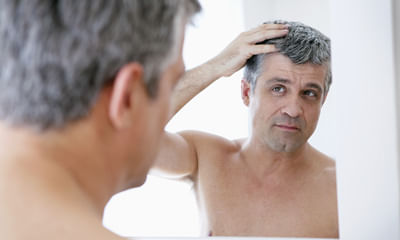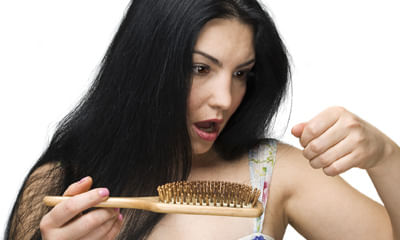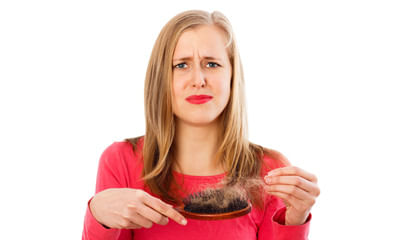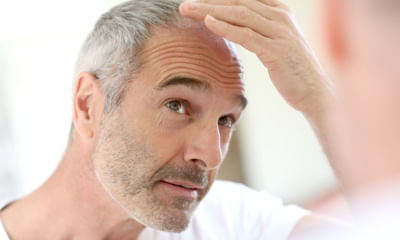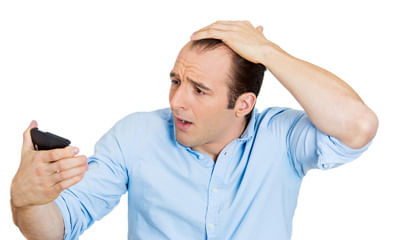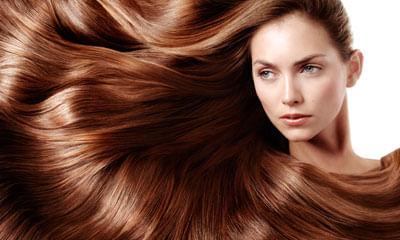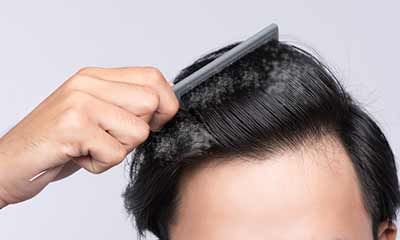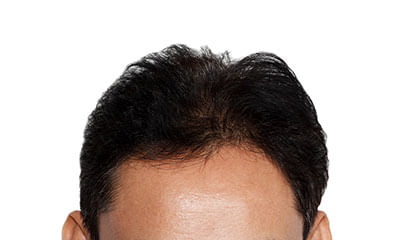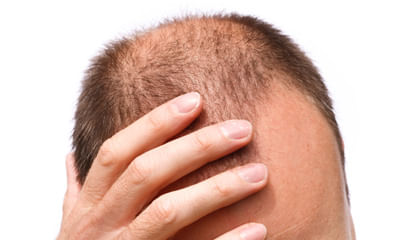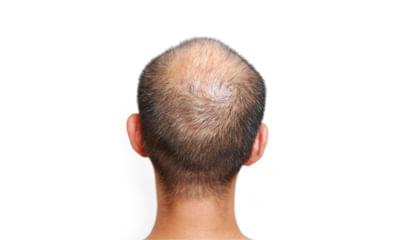How To Grow Hairs On Forehead
Sir mere hair grow ni kar rhe hai .lgatar jhadh rhe hai .bhoot patle hai mre bal. Hair fall ki vjh se mere aage aage for ...
Ask Free Question
This is hair loss along with hair thinning. Management is quite easy roots hair & scalp clinic amritsar.
Suffering from hair loss problem I dnt have hair on my forehead how to get over there by natural treatment. ...
Ask Free Question
The best natural method for hair loss is doing yoga as explained below. Balayam is a nail rubbing exercise and it is a union of two hindi words bal and vyayam where bal means hairs and vyayam indicates exercise. In simple language ‘balayam’ means an exercise for hairs. To be more specific, balayam is an acupressure therapy in which a person rubs his/her fingernails of both hands against each other to stimulate the scalp’s activities. This stimulation if done correctly, frequently and for a longer period of time is known to boost natural hair growth and cure mpb (i.e. Male pattern baldness or androgenic alopecia) observed in some men and women. Method: rub four fingernails (except thumb) of both hands (as hard as possible) against each other. The surface of fingernails should rub hard against each other. Since roots of hair follicles on the scalp are connected to fingernails, this pressure creation will help in pumping required nutrition to the scalp if you rub the tip of fingernails of one hand against the surface of fingernails of another hand, then it accelerates hair growth on ears. If you rub surfaces of only both thumbnails against each other, you can notice faster growth of moustache and beard. (so women should avoid it) if you rub nail tips of one hand with the surface of other hand’s nails, hair in ears will grow. So, it is important to rub without causing friction to nail ends and avoid thumbs. Apart from this exercise, try to quit smoking and have control over alcohol consumption. Also add at least 80-100 gms of protein (soy is preferable), 30 gms of iron and enough sulphur. Drink plenty of pure water, which can help to remove toxins from your body. If you are suffering from anaemia, increase your iron intake. Do this at least for 10 minutes (increase time limit if your hair fall is more) in the morning, before breakfast and 10 minutes in the evening, before dinner. Along with this yoga, practice prithvi mudra for 40 minutes each day. People having high blood pressure should avoid balayam. It may aggravate the condition. Letting your hair get enough sunlight every day is also important. Balayam may not be effective in types of baldness like alopecia areata, alopecia totalis, alopecia universalis etc. Within 3-6 months, you will see a noticeable change in your hairline. After 12 months of regular practice with a proper diet, your lost hair should be restored.
My sister is 20 year old female and she have hair loss problem. She tried many oils and shampoo but nothing worked. Her ...
Ask Free Question
The truth is, hair fall is a complex problem. In fact, ayurveda believes, its the effect of an internal imbalance. Identifying and addressing this internal imbalance will: reduce hair fall & damage reduce hair maintenance effort heal dry, brittle & lifeless hair in order to understand the root cause of your current hair fall, it is important to find out which internal imbalance is causing it losing 20-100 hair daily is normal. Any more than that and you should start treatment. There can be several factors behind hair loss such as environmental effects, aging, too much stress, excessive smoking, nutritional deficiencies, hormonal imbalance, genetic factors, scalp infections, use of wrong or chemically enriched hair products, certain medicines and medical conditions like thyroid disorder, autoimmune diseases and chronic illnesses to name a few. Do not use shampoo and apply coconut oil and only dry excess oil if any without soap or shampoo in order to have a healthy volume of hair on your head, the rate of hair loss and replacement should be in tandem. With age, your hair growth cycle shows signs of slowing down and factors like age, disease, and hormonal changes among others affect the pace at which an individual hair follicle moves through the 3 phases of the hair cycle. A disruption in your hair cycle can give rise to loss of hair that’s rapid and unexpected. Hair loss or alopecia can affect both men and women. The causes of your hair to fall at an alarming rate are the reasons behind hair loss could be many, but here are 6 major ones: 1. Lack of protein in your diet when you exclude protein from your diet, your body starts to conserve the protein that it has by altering the growth cycle of your hair. In such cases, your hair enters into the resting stage, resulting in zero hair growth. In india, 9 out of 10 people are said to suffer from low amounts of protein in their diet, with 91% vegetarians reporting protein deficiency. 2. Iron deficiency iron plays a very important role in the transportation of oxygen to the different organs of the body. Lack of iron in your diet (which is the principle reason behind anaemia) can give rise to several health problems including hair loss. Your body attempts to direct oxygen to important organs so as to support their functioning. As a result, your scalp witnesses a low supply of oxygen, which causes hair loss. 3. Vitamin d-3 deficiency deficiency of vitamin d-3 gives rise to a type of hair loss called telogen effluvium (te). This is a temporary hair thinning phenomenon that takes place when the all the hair on your scalp enter the resting phase at the same time, subsequently causing you to shed a large amount of hair later on. 4. Smoking smoking can also affect the health of your hair, especially the rate at which it falls and the number of strands lost in a day. A research carried out by the harvard school of public health has revealed that smoking can cause a rise in a hormone called dihydrotestosterone (dht). An increase in dht level prevents new hair cells from growing and causes hair follicles to reduce in size with each hair cycle. As a result, the area on your scalp that gets affected by dht experiences a lack of hair growth. 5. Use of testosterone supplements in gym intake of testosterone in the form of supplements and injections to build muscle mass can trigger hair loss in men. This takes place when the testosterone in these supplements gets changed into dht, thereby affecting your hair loss rate and amount. 6. Past illnesses (dengue, tb and typhoid) falling of hair can also be brought on by illnesses such as typhoid, tb and dengue as the hair growth cycle comes to a stop. Hormonal or metabolic stress that is experienced during the course of such diseases may cause hair to fall. The treatments available to cure hair loss are many like 1. Hair transplant hair transplant is a minimally invasive surgical technique that transfers hair follicles taken from other parts of your body to the balding area. Known by the name of follicular unit transplantation, this hair loss treatment can help to bring back the natural appearance of a fuller head of hair. Hair follicles are harvested using two procedures- follicular unit extraction and strip harvesting. The procedure can vary from 4-8 hours or more depending on the case. 2.platelet-rich plasma (prp) platelet- rich plasma (prp) is another treatment alternative that can reverse hair loss. It’s a simple non-surgical procedure that lasts about 60-90 minutes. In this form of hair treatment, the patient’s own blood cells, more specifically blood platelets are injected into the scalp. Usually, 8 sittings are required with each sitting being 2 weeks apart for better results. 3.lowlevellaser (revealed its effectiveness in encouraging hair growth in both the genders. Light) therapy (lllt) this form of hair therapy utilises light energy of a specific wavelength and threshold to stimulate cellular activity, thereby promoting hair growth. Do not use shampoo and apply coconut oil and only dry excess oil if any without soap or shampoo.
Dear sir/mam, good morning, I suffering from hair loss and baldness on my right forehead right now I have removed all ha ...
Ask Free Question
Ayurvedic experts believe that approximately 50% of indian women are losing hair faster than ever. Let’s be honest, the current beauty industry has destroyed hair care. With generic formulations, diluted & poor quality herbs, ayurvedic hair oils that otherwise seem promising have failed to reach expectations. Even though natural sciences are considered beneficial, it has hardly shown any results. The truth is, hair fall is a complex problem. In fact, ayurveda believes, its the effect of an internal imbalance. Identifying and addressing this internal imbalance will: reduce hair fall & damage reduce hair maintenance effort heal dry, brittle & lifeless hair in order to understand the root cause of your current hair fall, it is important to find out which internal imbalance is causing it losing 20-100 hair daily is normal. Any more than that and you should start treatment. There can be several factors behind hair loss such as environmental effects, aging, too much stress, excessive smoking, nutritional deficiencies, hormonal imbalance, genetic factors, scalp infections, use of wrong or chemically enriched hair products, certain medicines and medical conditions like thyroid disorder, autoimmune diseases and chronic illnesses to name a few. Do not use shampoo and apply coconut oil and only dry excess oil if any without soap or shampoo in order to have a healthy volume of hair on your head, the rate of hair loss and replacement should be in tandem. With age, your hair growth cycle shows signs of slowing down and factors like age, disease, and hormonal changes among others affect the pace at which an individual hair follicle moves through the 3 phases of the hair cycle. A disruption in your hair cycle can give rise to loss of hair that’s rapid and unexpected. Hair loss or alopecia can affect both men and women. The causes of your hair to fall at an alarming rate are the reasons behind hair loss could be many, but here are 6 major ones: 1. Lack of protein in your diet when you exclude protein from your diet, your body starts to conserve the protein that it has by altering the growth cycle of your hair. In such cases, your hair enters into the resting stage, resulting in zero hair growth. In india, 9 out of 10 people are said to suffer from low amounts of protein in their diet, with 91% vegetarians reporting protein deficiency. 2. Iron deficiency iron plays a very important role in the transportation of oxygen to the different organs of the body. Lack of iron in your diet (which is the principle reason behind anaemia) can give rise to several health problems including hair loss. Your body attempts to direct oxygen to important organs so as to support their functioning. As a result, your scalp witnesses a low supply of oxygen, which causes hair loss. 3. Vitamin d-3 deficiency deficiency of vitamin d-3 gives rise to a type of hair loss called telogen effluvium (te). This is a temporary hair thinning phenomenon that takes place when the all the hair on your scalp enter the resting phase at the same time, subsequently causing you to shed a large amount of hair later on. 4. Smoking smoking can also affect the health of your hair, especially the rate at which it falls and the number of strands lost in a day. A research carried out by the harvard school of public health has revealed that smoking can cause a rise in a hormone called dihydrotestosterone (dht). An increase in dht level prevents new hair cells from growing and causes hair follicles to reduce in size with each hair cycle. As a result, the area on your scalp that gets affected by dht experiences a lack of hair growth. 5. Use of testosterone supplements in gym intake of testosterone in the form of supplements and injections to build muscle mass can trigger hair loss in men. This takes place when the testosterone in these supplements gets changed into dht, thereby affecting your hair loss rate and amount. 6. Past illnesses (dengue, tb and typhoid) falling of hair can also be brought on by illnesses such as typhoid, tb and dengue as the hair growth cycle comes to a stop. Hormonal or metabolic stress that is experienced during the course of such diseases may cause hair to fall. The treatments available to cure hair loss are many like 1. Hair transplant hair transplant is a minimally invasive surgical technique that transfers hair follicles taken from other parts of your body to the balding area. Known by the name of follicular unit transplantation, this hair loss treatment can help to bring back the natural appearance of a fuller head of hair. Hair follicles are harvested using two procedures- follicular unit extraction and strip harvesting. The procedure can vary from 4-8 hours or more depending on the case. 2.platelet-rich plasma (prp) platelet- rich plasma (prp) is another treatment alternative that can reverse hair loss. It’s a simple non-surgical procedure that lasts about 60-90 minutes. In this form of hair treatment, the patient’s own blood cells, more specifically blood platelets are injected into the scalp. Usually, 8 sittings are required with each sitting being 2 weeks apart for better results. 3.lowlevellaser (revealed its effectiveness in encouraging hair growth in both the genders. Light) therapy (lllt) this form of hair therapy utilises light energy of a specific wavelength and threshold to stimulate cellular activity, thereby promoting hair growth.
I have suffering from hair fall mai age is 21 years old I had almost lost my front forehead my hairs are getting very th ...
Ask Free Question
The truth is, hair fall is a complex problem. In fact, Ayurveda believes, its the effect of an internal imbalance. Identifying and addressing this internal imbalance will: reduce hair fall & damage reduce hair maintenance effort heal dry, brittle & lifeless hair in order to understand the root cause of your current hair fall, it is important to find out which internal imbalance is causing it losing 20-100 hair daily is normal. Any more than that and you should start treatment. There can be several factors behind hair loss such as environmental effects, aging, too much stress, excessive smoking, nutritional deficiencies, hormonal imbalance, genetic factors, scalp infections, use of wrong or chemically enriched hair products, certain medicines and medical conditions like thyroid disorder, autoimmune diseases and chronic illnesses to name a few. Do not use shampoo and apply coconut oil and only dry excess oil if any without soap or shampoo in order to have a healthy volume of hair on your head, the rate of hair loss and replacement should be in tandem. With age, your hair growth cycle shows signs of slowing down and factors like age, disease, and hormonal changes among others affect the pace at which an individual hair follicle moves through the 3 phases of the hair cycle. A disruption in your hair cycle can give rise to loss of hair that’s rapid and unexpected. Hair loss or alopecia can affect both men and women. So what can cause your hair to fall at an alarming rate? The reasons behind hair loss could be many, but here are 6 major ones: 1. Lack of protein in your diet when you exclude protein from your diet, your body starts to conserve the protein that it has by altering the growth cycle of your hair. In such cases, your hair enters into the resting stage, resulting in zero hair growth. In india, 9 out of 10 people are said to suffer from low amounts of protein in their diet, with 91% vegetarians reporting protein deficiency. 2. Iron deficiency iron plays a very important role in the transportation of oxygen to the different organs of the body. Lack of iron in your diet (which is the principle reason behind anaemia) can give rise to several health problems including hair loss. Your body attempts to direct oxygen to important organs so as to support their functioning. As a result, your scalp witnesses a low supply of oxygen, which causes hair loss. 3. Vitamin d-3 deficiency deficiency of vitamin d-3 gives rise to a type of hair loss called telogen effluvium (te). This is a temporary hair thinning phenomenon that takes place when the all the hair on your scalp enter the resting phase at the same time, subsequently causing you to shed a large amount of hair later on. 4. Smoking smoking can also affect the health of your hair, especially the rate at which it falls and the number of strands lost in a day. A research carried out by the harvard school of public health has revealed that smoking can cause a rise in a hormone called dihydrotestosterone (dht). An increase in dht level prevents new hair cells from growing and causes hair follicles to reduce in size with each hair cycle. As a result, the area on your scalp that gets affected by dht experiences a lack of hair growth. 5. Use of testosterone supplements in gym intake of testosterone in the form of supplements and injections to build muscle mass can trigger hair loss in men. This takes place when the testosterone in these supplements gets changed into dht, thereby affecting your hair loss rate and amount. 6. Past illnesses (dengue, tb and typhoid) falling of hair can also be brought on by illnesses such as typhoid, tb and dengue as the hair growth cycle comes to a stop. Hormonal or metabolic stress that is experienced during the course of such diseases may cause hair to fall. The treatments available to cure hair loss are many like 1. Hair transplant hair transplant is a minimally invasive surgical technique that transfers hair follicles taken from other parts of your body to the balding area. Known by the name of follicular unit transplantation, this hair loss treatment can help to bring back the natural appearance of a fuller head of hair. Hair follicles are harvested using two procedures- follicular unit extraction and strip harvesting. Procedure can vary from 4-8 hours or more depending on the case. 2.platelet-richplasma (prp) platelet- rich plasma (prp) is another treatment alternative that can reverse hair loss. It’s a simple non-surgical procedure that lasts about 60-90 minutes. In this form of hair treatment, the patient’s own blood cells, more specifically blood platelets are injected into the scalp. Usually 8 sittings are required with each sitting being 2 weeks apart for better results. 3.lowlevellaser (revealed its effectiveness in encouraging hair growth in both the genders. Light) therapy (lllt) this form of hair therapy utilises light energy of a specific wavelength and threshold to stimulate cellular activity, thereby promoting hair growth. Various controlled clinical tests have do not use shampoo and apply coconut oil and only dry excess oil if any without soap or shampoo hair fall is a very common phenomenon that plagues millions of people around the globe. Most of you take supplements of vitamin on a regular basis as it aids the build-up of new hair and skin cells. Read on to find out how exactly do the various vitamins help your hair: 1.Vitamin a: this vitamin controls the production of retinoic acid in your hair follicle. It is not only helpful for skin care but stimulates hair growth. It is immensely fruitful in moisturizing your hair and keeping it healthy. Vitamin a is usually found in sweet potatoes, carrots, tuna, lettuce, mango, sweet red peppers, green leafy vegetables and spinach. 2.Vitamin b: variants of this, such as b12, aid in hair growth by managing stress. Vitamin b is found in fruits such as oranges and papayas, and beans. 3.Vitamin c: this vitamin helps you absorb iron from the food you eat which is an absolute essential for hair growth. It also boosts the synthesis of collagen that is required to repair the damage and sustain the structure of your hair. Fruits such as papayas, guavas, lemons, sweet lime, orange, kiwi, vegetables such as broccoli, yellow bell peppers and leafy vegetables are replete with vitamin c. 4.Vitamin d: this vitamin rejuvenates the hair cells in order to form new shafts of hair. Vitamin d is found in dairy products, mushrooms, soy milk, tofu, and cheese. Vitamin d is also naturally made by your body when you expose your skin to the sun, and is called the sun-shine vitamin. 5.Vitamin e: this aids in stimulating capillaries and enhancing blood circulation on the scalp. This additionally contributes to hair growth due to its high anti-inflammatory properties and antioxidant content. Certain foods loaded with vitamin e are pumpkin, broccoli, olive oil, sunflower seeds, almonds, avocado, tofu and spinach. 6.Vitamin b5: it is also known as panthenol, is a vital ingredient that is used in medicines to regulate hair fall. Foods enriched with vitamin b5 are sweet potatoes, sunflower seeds, avocados, cheese and mushrooms. Other ways to help hair- we have gone over the vitamins that may be important for the health of your hair. But lifestyle changes can help just as much. Try: 1.Cutting back on gels, blow-drying, and brushing hair when wet 2.Lowering your stress by exercising at least 30 minutes a day 3.Drinking enough water, 6-8 glasses a day being mindful of the foods and drinks you consume, the products you use, and the way you manage stress, can all help improve the well-being of your hair. If you wish to discuss about any specific problem, you can ask.
Can indulekha hair oil grow hair on my forehead? I want to reduce my hairline. It is too broad for my liking. A doctor o ...
Ask Free Question
No, Indulekha hair oil grows hair on your forehead no oil can grow hairs in a body part where there are no hair follicles.
Hello sir, myself sumit ,27 years old and I am suffering with hair fall along with dandruff and itching in head. I loss ...
Ask Free Question
Losing 20-100 hair daily is normal. Any more than that and you should start treatment. There can be several factors behind hair loss such as environmental effects, aging, too much stress, excessive smoking, nutritional deficiencies, hormonal imbalance, genetic factors, scalp infections, use of wrong or chemically enriched hair products, certain medicines and medical conditions like thyroid disorder, autoimmune diseases and chronic illnesses to name a few. Do not use shampoo and apply coconut oil and only dry excess oil if any without soap or shampoo in order to have healthy volume of hair on your head, the rate of hair loss and replacement should be in tandem. With age, your hair growth cycle shows signs of slowing down and factors like age, disease, and hormonal changes among others affect the pace at which an individual hair follicle moves through the 3 phases of the hair cycle. A disruption in your hair cycle can give rise to loss of hair that’s rapid and unexpected. Hair loss or alopecia can affect both men and women. So what can cause your hair to fall at an alarming rate? The reasons behind hair loss could be many, but here are 6 major ones: 1. Lack of protein in your diet when you exclude protein from your diet, your body starts to conserve the protein that it has by altering the growth cycle of your hair. In such cases, your hair enters into the resting stage, resulting in zero hair growth. In india, 9 out of 10 people are said to suffer from low amounts of protein in their diet, with 91% vegetarians reporting protein deficiency. 2. Iron deficiency iron plays a very important role in the transportation of oxygen to the different organs of the body. Lack of iron in your diet (which is the principle reason behind anaemia) can give rise to several health problems including hair loss. Your body attempts to direct oxygen to important organs so as to support their functioning. As a result, your scalp witnesses a low supply of oxygen, which causes hair loss. 3. Vitamin d-3 deficiency deficiency of vitamin d-3 gives rise to a type of hair loss called telogen effluvium (te). This is a temporary hair thinning phenomenon that takes place when the all the hair on your scalp enter the resting phase at the same time, subsequently causing you to shed a large amount of hair later on. 4. Smoking smoking can also affect the health of your hair, especially the rate at which it falls and the number of strands lost in a day. A research carried out by the harvard school of public health has revealed that smoking can cause a rise in a hormone called dihydrotestosterone (dht). An increase in dht level prevents new hair cells from growing and causes hair follicles to reduce in size with each hair cycle. As a result, the area on your scalp that gets affected by dht experiences a lack of hair growth. 5. Use of testosterone supplements in gym intake of testosterone in the form of supplements and injections to build muscle mass can trigger hair loss in men. This takes place when the testosterone in these supplements gets changed into dht, thereby affecting your hair loss rate and amount. 6. Past illnesses (dengue, tb and typhoid) falling of hair can also be brought on by illnesses such as typhoid, tb and dengue as the hair growth cycle comes to a stop. Hormonal or metabolic stress that is experienced during the course of such diseases may cause hairfall. The treatments available to cure hair loss are many like 1. Hair transplant hair transplant is a minimally invasive surgical technique that transfers hair follicles taken from other parts of your body to the balding area. Known by the name of follicular unit transplantation, this hair loss treatment can help to bring back the natural appearance of a fuller head of hair. Hair follicles are harvested using two procedures- follicular unit extraction and strip harvesting. Procedure can vary from 4-8 hours or more depending on the case. 2.platelet-richplasma (prp) platelet- rich plasma (prp) is another treatment alternative that can reverse hair loss. It’s a simple non-surgical procedure that lasts about 60-90 minutes. In this form of hair treatment, the patient’s own blood cells, more specifically blood platelets are injected into the scalp. Usually 8 sittings are required with each sitting being 2 weeks apart for better results. 3.lowlevellaser (revealed its effectiveness in encouraging hair growth in both the genders. Light) therapy (lllt) this form of hair therapy utilises light energy of a specific wavelength and threshold to stimulate cellular activity, thereby promoting hair growth. Various controlled clinical tests have do not use shampoo and apply coconut oil and only dry excess oil if any without soap or shampoo hair fall is a very common phenomenon that plagues millions of people around the globe. Most of you take supplements of vitamin on a regular basis as it aids the build-up of new hair and skin cells. Read on to find out how exactly do the various vitamins help your hair: 1.Vitamin a: this vitamin controls the production of retinoic acid in your hair follicle. It is not only helpful for skin care but stimulates hair growth. It is immensely fruitful in moisturizing your hair and keeping it healthy. Vitamin a is usually found in sweet potatoes, carrots, tuna, lettuce, mango, sweet red peppers, green leafy vegetables and spinach. 2.Vitamin b: variants of this, such as b12, aid in hair growth by managing stress. Vitamin b is found in fruits such as oranges and papayas, and beans. 3.Vitamin c: this vitamin helps you absorb iron from the food you eat which is an absolute essential for hair growth. It also boosts the synthesis of collagen that is required to repair the damage and sustain the structure of your hair. Fruits such as papayas, guavas, lemons, sweet lime, orange, kiwi, vegetables such as broccoli, yellow bell peppers and leafy vegetables are replete with vitamin c. 4.Vitamin d: this vitamin rejuvenates the hair cells in order to form new shafts of hair. Vitamin d is found in dairy products, mushrooms, soy milk, tofu, and cheese. Vitamin d is also naturally made by your body when you expose your skin to the sun, and is called the sun-shine vitamin. 5.Vitamin e: this aids in stimulating capillaries and enhancing blood circulation on the scalp. This additionally contributes to hair growth due to its high anti-inflammatory properties and antioxidant content. Certain foods loaded with vitamin e are pumpkin, broccoli, olive oil, sunflower seeds, almonds, avocado, tofu and spinach. 6.Vitamin b5: it is also known as panthenol, is a vital ingredient that is used in medicines to regulate hair fall. Foods enriched with vitamin b5 are sweet potatoes, sunflower seeds, avocados, cheese and mushrooms. Other ways to help hair- we have gone over the vitamins that may be important for the health of your hair. But lifestyle changes can help just as much. Try: 1.Cutting back on gels, blow-drying, and brushing hair when wet 2.Lowering your stress by exercising at least 30 minutes a day 3.Drinking enough water, 6-8 glasses a day being mindful of the foods and drinks you consume, the products you use, and the way you manage stress, can all help improve the well-being of your hair. If you wish to discuss about any specific problem, you can ask.
I want to transplant my hair over my forehead portion the area is 1.5"x1. 5" what will be the charges of this. Also how ...
Ask Free Question
Hi it depends many factors 1) in which city your doing 2) from who are your doing 3) there are various charges according to above other factors.
I have a bald at my forehead. What is treatment to grow hair at front of my forehead? ...
Ask Free Question
Hot oil massage Take coconut oil, olive oil or canola oil and heat it up so that it is warm, but not too hot. Massage your scalp with this hot oil for a few minutes. Put on a shower cap for an hour then shampoo your hair. It helps to stop hair loss and promote hair growth.
Hello, I am 27 year old professional. I am loosing hair on my forehead. Also my scalp is itchy. Whenever I take shower o ...
Ask Free Question
Losing 20-100 hair daily is normal. Any more than that and you should start treatment. There can be several factors behind hair loss such as environmental effects, aging, too much stress, excessive smoking, nutritional deficiencies, hormonal imbalance, genetic factors, scalp infections, use of wrong or chemically enriched hair products, certain medicines and medical conditions like thyroid disorder, autoimmune diseases and chronic illnesses to name a few. Do not use shampoo and apply coconut oil and only dry excess oil if any without soap or shampoo Most people who are losing their hair are losing it simply because they have inherited a genetic design that pre-disposes them for baldness. Hair loss can also be caused by underlying medical problems, drugs, infections and a variety of other factors. Medical problems that can cause diffuse hair loss include: anemia, thyroid disease, connective tissue diseases (such as Lupus), severe nutritional deficiencies, surgical procedures, general anesthesia, and severe emotional problems. In women, obstetric and gynecologic conditions, such as post-partum and post-menopausal states, and ovarian tumors can cause hair loss. A relatively large number of drugs can cause a temporary form of hair loss called “telogen effluvium,” a condition where hair is shifted from its growth phase into a resting stage and then, after several months, is shed. Fortunately, this shedding is reversible when the medication is stopped. Drugs that can cause diffuse hair loss include; blood thinners (anti-coagulants), medication for seizures, gout, high blood pressure, and thyroid disease, anti-inflammatory drugs such as prednisone, medications that lower cholesterol and other lipids, mood altering drugs, chemotherapy, oral contraceptive agents (particularly those high in progestins), diet pills, high doses of Vitamin A, and certain street drugs (such as anabolic steroids and cocaine). Although there are a number of dermatologic conditions that cause hair loss, they produce a pattern that is different from that of common baldness (androgenetic alopecia) or the diffuse forms of hair loss mentioned above. Localized hair loss may be sub-divided into scarring and non-scarring types. Alopecia Areata is a genetic, auto-immune disease that typifies the non-scarring type. It manifests with the sudden onset of discrete round patches of hair loss (although the condition can become generalized). In its mild form, it can be treated with local injections of steroids. Traction Alopecia, the hair loss that occurs with constant tugging on the follicles (as seen with tightly braided hair or “corn rows”) is often reversible, but can become permanent if the habit persists for a long period of time. Treatment is only possible if the hair loss from traction is not extensive and if the habit of pulling is stopped. Scarring alopecia can be caused by conditions such as Lupus, Lichen Planus, or radiation therapy. Hair loss can occur as a result of scalp trauma or cosmetic facial surgery and is often amenable to hair transplantation. Radiotherapy can cause both scarring and non-scarring hair loss and it also can be treated with surgical hair restoration if the area is localized. Basic Facts on Common Baldness All humans are born with a finite number of hair follicles. The diameters of the individual hairs in our follicles increase as we grow from infancy to adulthood. However, no matter what we eat, what our lifestyles may be, or what kinds of vitamins we take, we never grow any new hair follicles. At puberty, most men have a low, broad hairline that usually recedes to its mature position by the age of 20 to 22 and then stabilizes. In men with a genetic tendency to go bald, this hairline will continue to recede and new areas of thinning may occur. Severe illness, malnutrition, or vitamin deficiency can speed or exacerbate the process of genetic hair loss, but this hair loss occurs in perfectly healthy men and is generally not a sign of disease. The common hereditary form of hair loss is also referred to as androgenetic alopecia, common baldness, or male pattern hair loss. It is only in recent years, with our greater knowledge of genetics and the chemistry of sex hormones, that we have begun to understand the causes. It is important to note that common genetic baldness also occurs in women, but generally it appears differently than it does in men. In androgenetic alopecia, the hormone DHT, a byproduct of testosterone, affects the follicles that produce terminal hairs in certain parts of the scalp. Under the influence of DHT, susceptible follicles first produce thinner, shorter hairs with weaker shafts. Eventually, these follicles produce only fine, almost invisible, vellus hairs, and they may die out altogether. Androgenetic alopecia requires three conditions for its occurrence: the genes for hair loss, male hormones in adequate quantities, and time. Genes A gene is a single bit of chemically encoded hereditary instruction that is located on a chromosome and represents a tiny segment of DNA. Chromosomes occur in pairs (humans have 23 pairs), and every individual inherits one set of chromosomes from each parent. The genetics of androgenetic alopecia is complicated and hair loss is thought to involve more than one gene. When several genes govern a trait, it is called polygenic. Genes that are located on the X- or Y-chromosomes are called sex-linked. Genes on the other 22 pairs of chromosomes are called autosomal. It is currently believed that the genes governing common baldness are autosomal. This means that the baldness trait can be inherited from the mother’s or the father’s side of the family. The commonly held notion that baldness comes only from the mother’s side of the family is incorrect, although for reasons not fully understood, the predisposition inherited from the mother is of slightly greater importance than that inherited from the father. The term “dominant” means that only one gene of a pair is needed for the trait to show up in the individual. A “recessive” gene means that both genes must be present in order for the trait to be expressed. The genes involved in androgenetic alopecia are believed to be dominant. Just because a person has the genes for baldness, it does not mean the trait will manifest itself and the person will actually become bald. The ability of a gene to affect one’s characteristics, i.e. Be visible in a particular individual, is called “expressivity.” Expressivity relates to a number of factors; the major ones being hormones and age, although stress and other factors yet undetermined, may play a role. None of the genes responsible for male pattern baldness have yet been identified. This suggests that any kind of genetic engineering to prevent common baldness is still many years away. Even if the gene is identified, scientists must still figure out how to control or change them. Hormones Hormones are biochemical substances produced by various glands, such as the pituitary, adrenal and testes, that work on distant sites throughout the body, by secreting their products directly into the bloodstream. These chemicals are very powerful and minute amounts of them have profound effects upon the bodily functions. The primary male sex hormone is testosterone. Testosterone and other related hormones that have masculinizing effects are produced primarily in the testicles. This means that the hormone levels that are seen in adults do not reach significant levels until the testicles develop and enlarge during puberty. These hormones are the cause of many changes that occur in puberty: deepening of the voice, growth of facial hair, development of body odor and acne, change in the muscular development, and change in body shape. These hormones can also cause baldness. The presence of androgens, testosterone, and its related hormone DHT, cause some follicles to regress and die. In addition to the testicles, the adrenal glands located above each of our kidneys, produce androgenic hormones; this is true for both sexes. In females, ovaries, like testicles, are a source of hormones that can affect hair. The relationship between a man’s testicles and hair loss has been recognized for centuries. In societies that had harems, guards were castrated to prevent sexual activity between the guards and women of the harem. In all of those societies, it was observed that men who were castrated before puberty did not become bald. Early in the 20th century, castration was common treatment for patients with certain types of mental illness as it seemed to have a calming effect on their personality. It was also noted that these patients did not become bald. A psychiatrist discovered the specific relationship between testosterone and hormonally induced hair loss during this time. The doctor noted that a castrated, mentally ill patient had a full head of hair, while the identical twin brother of that patient was completely bald. The doctor decided to determine the effect of treating his patient with testosterone, which had recently become available as a drug. He injected his patient, the hairy twin, with testosterone to see what would happen. Within weeks, the hairy twin began to lose all but his wreath of permanent hair, just like his normal twin. The doctor stopped administrating testosterone; however, his patient never regained his full head of hair. The hormone believed to be most directly involved in androgenetic alopecia is dihydrotestosterone (DHT). DHT is formed by the action of the enzyme 5-a reductase on testosterone. DHT acts by binding to special receptor sites on the cells of hair follicles to cause the specific changes associated with balding. DHT decreases the length of the anagen (growing) cycle of the hair and increases the telogen (resting) phase, so that with each new cycle the hair shaft becomes progressively smaller. This process is referred to as “miniaturization”. In men, 5-a reductase activity is higher in the balding area. Women have half the amount of 5-a reductase overall as compared to men, but have higher levels of the enzyme aromatase, especially in their frontal hairlines. Aromatase decreases the formation of DHT, and its presence in women may help to explain why female hair loss is somewhat different than hair loss in men. Time The mere presence of the necessary genes and hormones is insufficient to cause baldness. Hair loss also requires exposure of susceptible hair follicles to the responsible hormones over time. The length of time required for hair loss to start due to hormone exposure varies from one individual to another, and relates to a person’s genetic expression and to the levels of testosterone and DHT in his bloodstream. Significantly, hair loss does not occur all at once, but tends to be cyclical. People who are losing their hair experience alternating periods of slow hair loss, rapid hair loss, and even long periods of relative stability. The progression of androgenetic hair loss, however, will generally continue over ones lifetime. The factors that cause the rate of loss to speed up or slow down are, for the most part, unknown. Stress When the body experiences stress caused by a traumatic experience, nutritional deficiency, or illness, the rate of hair loss can increase. Women’s hair seems to be more sensitive to the effects of stress than men’s hair. This may be because women with a genetic predisposition towards hair loss usually have a higher percentage of fragile, miniaturized hair. It is important to note that stress generally causes the type of hair loss referred to as telogen effluvium. This is very different from androgenetic alopecia. Telogen effluvium is the reversible shedding of hair in the resting phase when the body senses that it needs to divert its energies elsewhere. Therefore, stress temporarily changes the amount of hair that is shed, but the lost hair is likely to grow back. Hair Loss Fiction Lack of Blood Supply Some assert that a lack of blood supply contributes to hair loss. Bald skin gradually loses some of its blood supply and, consequently, it becomes thin and shiny. These changes, however, are secondary to the loss of hair, not the other way around. When hair follicles are transplanted into thin bald skin, or scar tissue, both of which have a relatively poor blood supply, the presence of the grafted hair causes the local blood supply to gradually increase. Clogged Pores This claim usually accompanies microscopic photographs of an empty follicle clogged with a heaped up waxy substance that prevented the hair from growing. There is no scientific evidence that clogged pores interfere with hair growth. Common sense is sufficient to refute these claims. Why would pores be clogged on the top of the scalp and not on the back and sides? And if clogged pores caused baldness, women would be as bald as men. Hats and Hair Loss Folklore says that men who constantly wear hats are more likely to become bald, as hats prevent air from circulating to the head. Like other tissues in the body, hair follicles get their oxygen through the bloodstream, rather than from ambient air. Snake Oil Remedies and other Magic Cures Many over-the-counter lotions and drugs claim to restore lost hair with new products appearing all the time. Whether sold through drug stores, salons or mass media, most are useless. A 1989 Supreme Court decision prevents these potions from being advertised or sold in the United States as medications that prevent hair loss or promote the re-growth of lost hair; however, such claims are still made. Charlatans of every age have eagerly tried to profit from a gullible public. Excepting cancer and arthritis, hair restoration has been one of the most fertile areas for medical quackery. For example, in the same year that the principle of the magnetic field was described, “magnetic” and “electric” hairbrushes for the prevention and treatment of baldness appeared on the market. Concoctions that claimed to be “snake oils” were also sold for the treatment of arthritis and baldness. In hindsight, it is understandable that an unsophisticated person, who was crippled by pain from arthritis and who lived at a time when there was no better treatment for his illness, might be desperate enough to try “snake oil” as a treatment for arthritis. However, until the Supreme Court decision banning their promotion, ads for products that claimed to be able to restore hair filled the television airwaves. Infomercials complete with real doctors, pictures, and testimonials promoted these worthless potions every day. Even today, it is difficult for the layperson to differentiate between fact and fiction when it comes to hair loss remedies. There are two FDA approved medications to treat androgenetic alopecia. Though they have limited benefit, they may be useful for many. These two drugs, minoxidil and finasteride, are discussed in detail in the chapter titled “Hair Loss Medications.” In order to have healthy volume of hair on your head, the rate of hair loss and replacement should be in tandem. With age, your hair growth cycle shows signs of slowing down and factors like age, disease, and hormonal changes among others affect the pace at which an individual hair follicle moves through the 3 phases of the hair cycle. A disruption in your hair cycle can give rise to loss of hair that’s rapid and unexpected. Hair loss or alopecia can affect both men and women.

